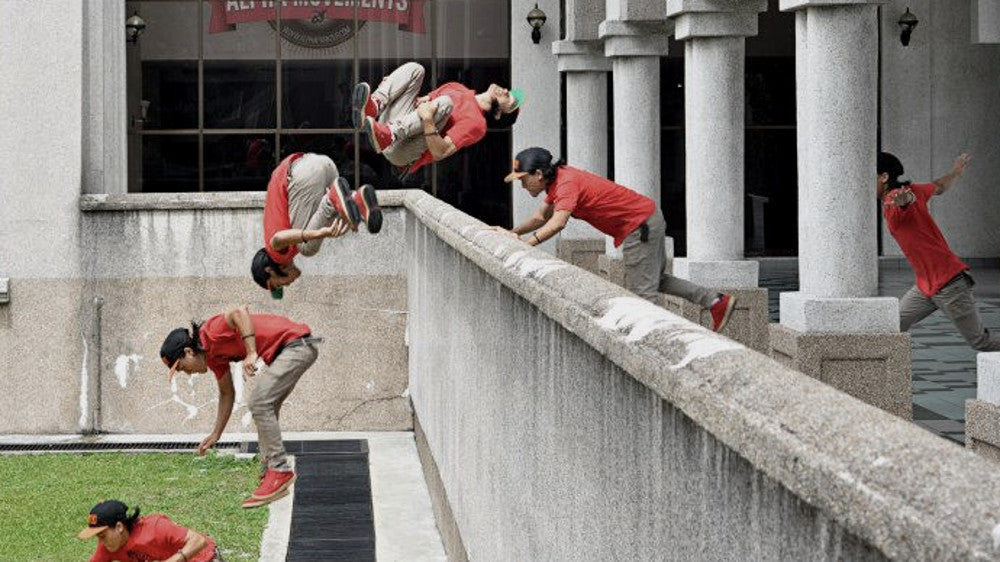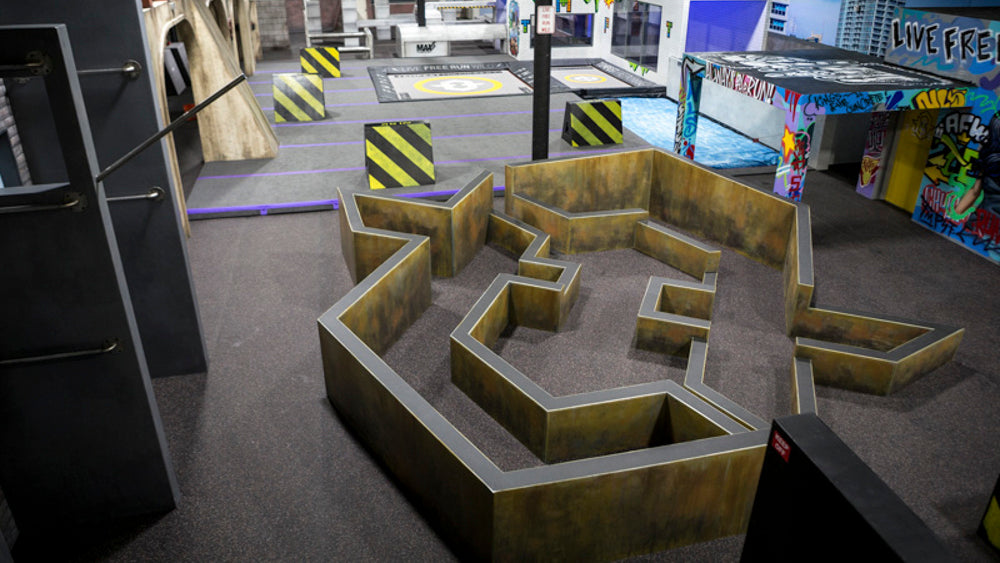A Brief History Of: The Kong Gainer

A few weeks ago Travis Verkaik rocked the parkour world by becoming the first person to kong double gainer outside of a gym. To put that achievement into context, I thought I would explore the history of the kong gainer, and celebrate the pioneers who bought it to the world.
The kong gainer is an iconic movement within the world of freerunning. It was one of the first of a whole wave of fresh movements that came about from exploring the space between traditional ‘parkour’, and the much less developed flips of that era. It’s visually impressive; not just for how difficult it is to perform, but for the level of danger too - with the head both narrowly and rapidly passing over the wall it’s performed on.
Back in the mid-00’s freerunning was very different. People didn’t really do ‘runs’ like they do today, instead of singular movements would be drilled repeatedly. Doing a given flip off a higher platform, or over a long distance was seen as a valid path of progression! Backflips and Gainers were always around and were some of the big benchmarks of your progression as a freerunner. In 2006 a clean standing gainer executed onto sand would even draw applause from both onlookers and fellow freerunners.
The most complicated tricks on the menu at this time were probably twisty things such as double b-twists, your standard pimp-flip, wallflip 360’s, or even backflip 720’s for the super-elite. It was all pretty separate from the movements associated with Parkour.
Enter Daniel Ilabaca in 2007. This video dropped unexpectedly and shocked the world, in all its 360p glory. I vaguely remember there had been talk of this move being a possibility, but it was all pretty academic, and no one seemed serious about working on it. But this here was categorical proof that the kong gainer was possible. Legend has it that this was his first ever attempt at the move - something that sounds unbelievable now in the era of indoor freerunning facilities. But if you knew anything about Danny, you’d have no trouble believing it.
All the more impressive for how cleanly executed it was, and at such a great height. It took awhile for the community to digest what they had witnessed Danny do. People did, however, get to work, and gradually over the next couple of years, it made its way into video content. Along with a few other movements that spawned from the ‘idea’ of combining flips with traditional parkour movements - like the dash-front.
The first kong gainer I ever recall seeing onto concrete was in Will Sutton’s 2010 Showreel. A full three years after Danny bought the move into the world. While I’m sure it was done on concrete at some point before 2010, I still think it’s a testament to how difficult and scary the move is.
Indeed it was also in 2010 that we got a reminder of just how dangerous kong gainers can be, with Storm Freerun’s Ashley Holland being hospitalized after clipping the back of his head while attempting the move:
*WARNING: NOT FOR THE FAINT HEARTED*
Several other things happened around this time, as more and more people started to conquer the movement:
- Out in Russia in particular, people started to experiment with kong gainering down to the floor from flat. They would find a level platform with a sufficient drop and then perform the kong gainer on the edge. Representing a slight step-up in difficulty.
- People started doing kong gainers ‘off-axis’ slightly, be that for stylistic reasons, or because it’s much less scary to try! You’ve all seen what I’m talking about, as it’s one of those things that’s stuck around to this day. You kind of do the kong gainer but push off one arm a little more so your shoulder goes over the wall instead of your head.
- Pasha did the first kong gainer 360 type movement (at 46s). It was onto sand, and very ‘gyroed’, but nevertheless a hugely understated moment. It wasn’t just big for the history of the kong gainer, but it also foreshadowed a lot of what was to come in the modern era of freerunning. Full twisting variants of complicated tricks come around much more quickly nowadays.
Between 2010 and 2016 things slowed down a little bit. For the most part, it was just a case where more and more people started being able to do them. There were a couple of smaller moments however: like when Kevin Fluri started doing ‘monkey gainers’ - taking off from a rail instead of a wall, making it way harder because you have to be much more accurate with the placement of your hands, and then use a smaller surface area to push yourself around.
There was also a moment in 2015 where Alexey Kruk did a kong gainer 360 down from a really high up platform onto sand. I think that was the first time the two previously separate progressions were combined together.
Things started heating up again in the kong gainer 360 department when both Calen Chan and DK were working on taking it outside at the same time in 2016. Both came out with videos of them doing it at roughly the same time, and there some dispute over who technically did it first. It later transpired that DK was inspired to try it based on a status Calen posted where he said he was going to go out and do it.
Of course, that was all moot, because neither of which was the first kong gainer 360 outside of a gym. Although I believe Calen does get to claim the first one onto concrete.
Of course, the next big progression the sport was waiting on was the kong double gainer. Many thought it to be literally impossible unless done somewhere dangerously high. Calen was also working on these in the gym in early 2017. He was having some success with them, as you can see from this video. They were definitely possible!
But in the end, it was Travis Verkaik who took it outside of the gym first at the beginning of 2018. He sent the double after several regular kong gainers as preps on a cold winter's day in London. It really shows how much the sport has moved forward in the last decade; when a move that used to be a showstopper is now just the thing you spam as prep! Not to mention Travis would have been about 4 years old when Danny did the first kong gainer.
And that brings us right up to today. Who knows what else people are going to do with the kong gainer in the coming years? It took 11 years from the first single to first double. Perhaps we’ll see the first genuine triple in another 11 - how wild would that be? And of course, before then we’ve got some other milestones to look forward to, like the 720, and maybe even the full-in double!
What do you think is coming next in the world of kong gainers? And what other movements would you like to see a brief history of? Let me know in the comments!
*Cover Image Credit: Abudi Alsagoff & Alpha Movements*


